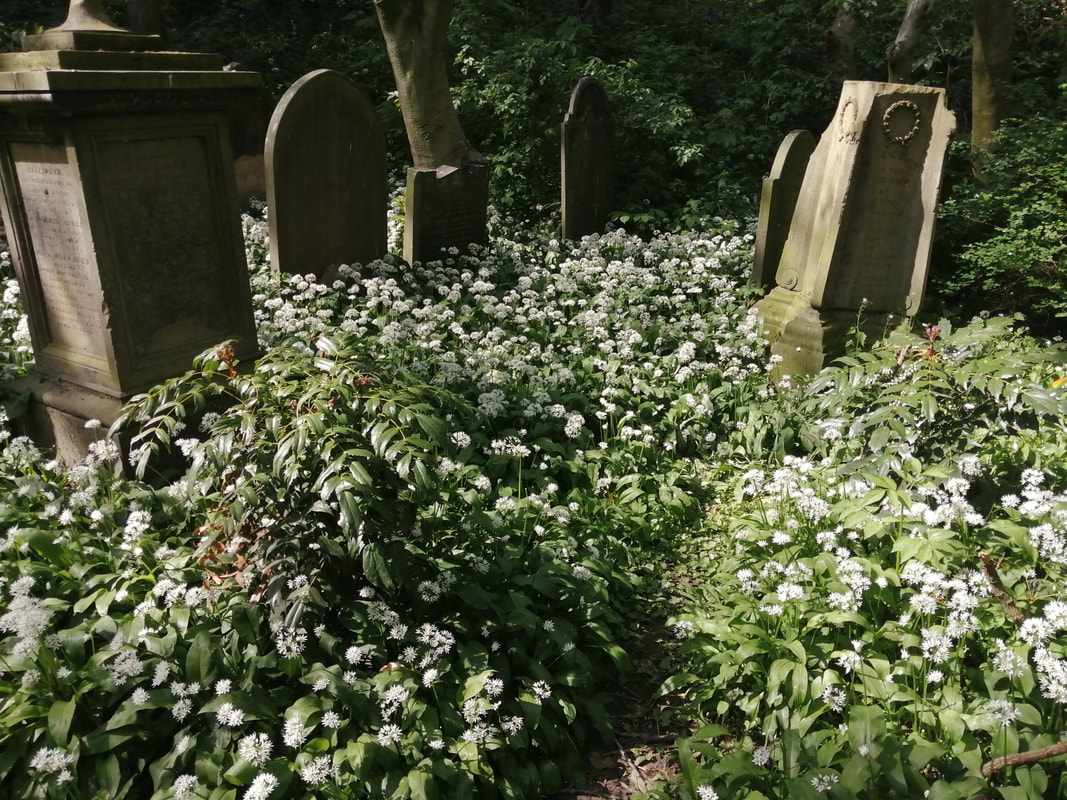|
Prayer for Liverpool
Walking into St. James’ Gardens on my daily exercise in the last week or two, it has not only been senses of sight and hearing that have been stimulated by the beauty of nature, but my sense of smell too. The Wild Garlic, also known as Ramsons, is at its peak, and on the calmer days, the fragrance really assaults me as I walk past the carpets of white flowers. They are all racing to produce their flowers, be pollinated, and then set seed before the tree canopy closes in. It is a marvel how nature works all of this out. The smell of the garlic immediately transports me back to woodland walks in the past at this time of year – it really feels that Spring has become well-established. It has long been acknowlegded that smell can evoke all kinds of emotions in us and yet the precise chemistry of our olfactory organs and how they communicate with the brain is still being unraveled, so I understand. I did start to look into it with a few Google searches and found myself rapidly out of my depth! I must make a note to ask our Canon Scientist about it! Yet, from experience, we all know that certain smells can influence us – the classics being supermarkets wafting round smells of freshly baked bread or coffee to encourage us to purchase their products and feel in a good mood for spending money. I have also heard of people with dementia and memory loss being treated with ‘smell therapy’ (my term) to help unlock memories from decades ago. I am struck by how, when I smell sausage rolls being cooked, I am instantly transported back to my childhood visits to my Grandma’s house in Kent. Every time we arrived there, generally mid-morning, she would always have freshly cooked (huge!) sausage rolls for us to eat with the most gorgeous pastry! It seems that God intended us to use our sense of smell in worship and in the book of Leviticus (not one I tend to dip into very often it has to be admitted) there are many references to what kinds of burnt offerings God deemed to have a ‘pleasing odour’! He also elucidates the precise make-up of the holy anointing oil and holy incense for the sacrificial rituals in the Tabernacle. In Exodus 30:23-25 we read that the anointing oil is perfumed with liquid myrrh, cinnamon, aromatic cane, and cassia. The incense is to include, “sweet spices, stacte and onycha, and galbanum, sweet spices with pure frankincense….and seasoned with salt” (Exodus 30:34-45). Both were only to be used for worship, not for anything else. Of course, many churches still use incense as part of their worship, and so the smell of it becomes intertwined with the experience and memories of worship. One Anglo-Catholic friend of mine (somewhat wryly) also remarked that it was useful for covering up the smell of damp and mouldy old hymn books that is such a common odour in many older churches! More prosaically, in my last church (a large Mediaeval barn of a place), there were written accounts of dried lavender being scattered across the floor in the Nave in centuries past – the aim being to offset the smell of the ‘great unwashed’! In the New Testament, there are some striking references to aroma in worship. Famously, frankincense and myrrh are two of the gifts from the Magi to the infant Jesus – incense to signify his divinity and myrrh prefiguring his death and the embalming of his body. Another reference to fragrance, which appears in all four gospels, is of Mary Magdalene pouring a large quantity of pure nard (a resin derived from a plant which grows in the far East) on the feet of Jesus, as an act of worship. John 12:3 tells us that, “the house was filled with the fragrance of the perfume”. That she was willing to make such a material sacrifice and risk social embarrassment by doing this beautiful thing tells us dramatically just how she adored Jesus and was grateful for all that he had done for her. Jesus was evidently very touched by this gesture. No doubt aware of the significance in worship of fragrance, St. Paul describes gifts sent to him by the Christians in Philippi as “a fragrant offering, a sacrifice acceptable and pleasing to God” (Philippians 4:18). Bowls full of incense are described in Revelation 5:8 as “the prayers of the saints”. With all that in mind, and perhaps especially during this time of ‘lockdown’, do we have regard to the fragrances around us, whether in our homes or outdoors, if and when we are able to get out for a bit of daily exercise. I am fortunate to be able to enjoy not just the smell of wild garlic but the ‘smell of the outdoors’ for an hour most days but I understand that not everyone can do that. In our homes, though, do we use fragrance to help our well-being so that we are not just smelling hand-sanitizer and bleach?! Perhaps even when we are watching an on-line service or having a time of quiet for prayer and reflection, we can find something that smells lovely – to enhance our devotions as we seek to offer up our worship to God as a ‘fragrant offering’? It might not be exactly the same stuff that was used in the Tabernacle or even by Mary Magdalene, but I am sure that God will still regard it as an acceptable sacrifice of praise and worship. Canon Neal While you're here: Why not prepare for next Sunday's worship? Our preparation sheet for adults and for children can be accessed by clicking on the Resources tab of this website: https://www.prayerforliverpool.org/prayer-resources.html.
0 Comments
Your comment will be posted after it is approved.
Leave a Reply. |
supporting you during these uncertain times AuthorLiverpool Cathedral is a place of encounter. Built by the people, for the people, to the Glory of God Archives
September 2022
|
|
Prayer for Liverpool
brought to you from Liverpool Cathedral St James Mount Liverpool L1 7AZ |
Liverpool Cathedral is a place of encounter.
Built by the people, for the people, to the Glory of God www.liverpoolcathedral.org.uk |

 RSS Feed
RSS Feed
